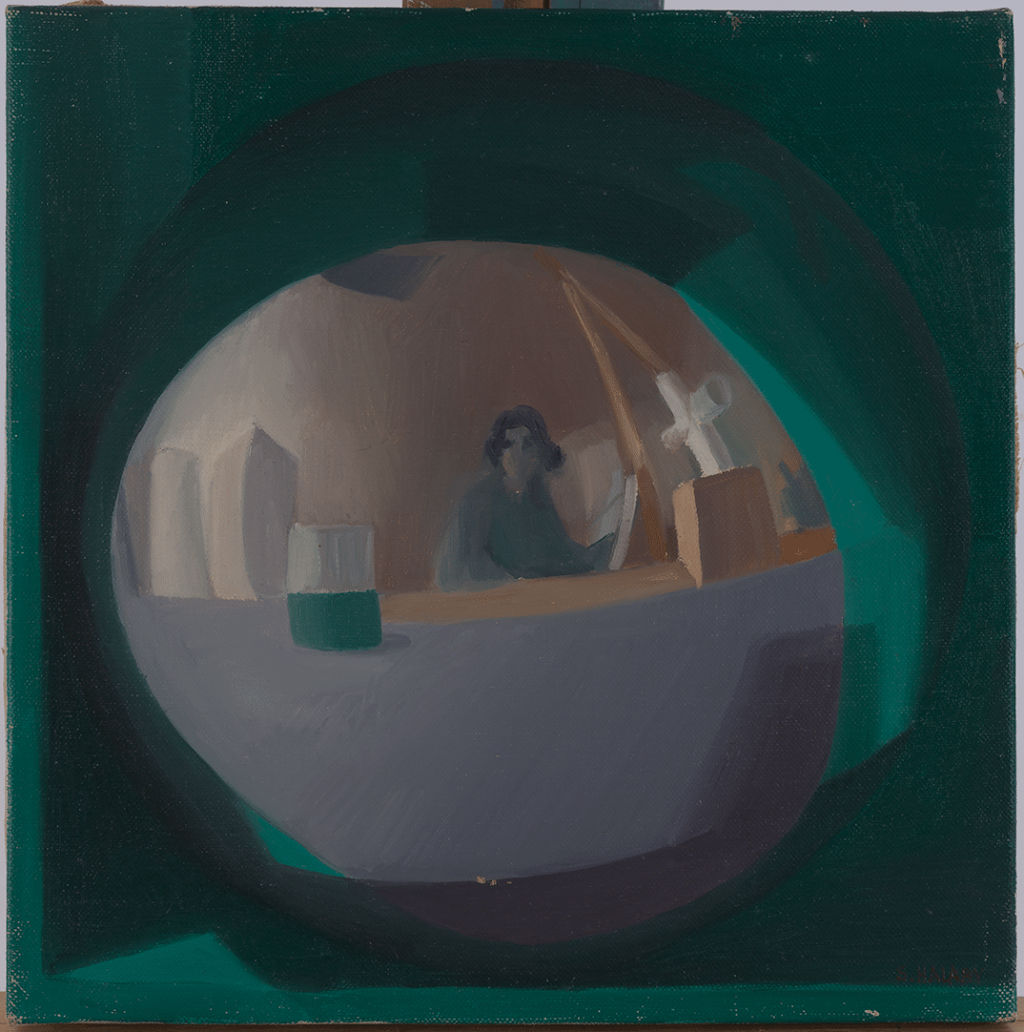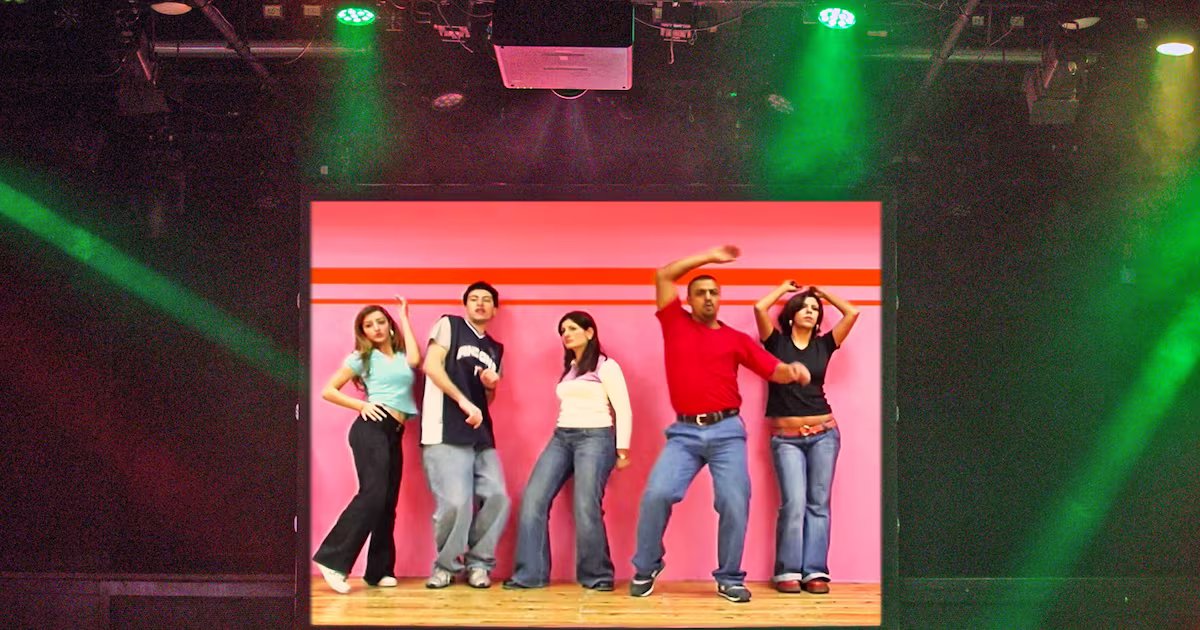
Samia Halaby, “Green Mirror Sphere,” 1968. Courtesy of the artist, New York/Photo: Samia Halaby
The first American survey of Samia Halaby’s work involved a three-year collaboration between curatorial teams at Halaby’s alma maters, Michigan State University and Indiana University. Set to open on February 10 at the Indiana University’s Eskenazi Museum of Art before moving to the Broad, the director of the Eskenazi Museum of Art canceled the show in December 2023, responding to Halaby’s vocal support for Palestinians over Israel’s attacks on Gaza. The show at the MSU Broad Art Museum draws upon Halaby’s history and the work she developed living in the American Midwest—the multiple universities where she studied, researched, and taught—and brings her innovations in abstract art into focus for students and new audiences.
Halaby and her family fled Palestine in 1948 and moved to the United States shortly after. She graduated with a master’s degree from Michigan State in 1960, where she developed some of her early inquiries into abstraction—a set of sketches in the exhibition demonstrate experiments with color and linework. At Indiana University, she worked with an Anima computer to develop computer-based kinetic art, bringing abstract painting into the digital realm. She continued to study and teach at several universities, traveling back to Jerusalem in the 1990s where she studied Islamic architecture and visited the Mediterranean Sea, continuing her inquiry into both landscape and memory. Today, she works from a studio in New York City’s Tribeca neighborhood.
“Samia Halaby: Eye Witness” exhibits a body of work that spans Halaby’s career of over sixty years and brings to light her specific relationship to abstraction: one that evokes movement as much as it demonstrates Halaby’s particular relationship to place. Halaby’s work involves elements of color and shape, yet she is a precise artist—evident in her work is a mathematical or scientific approach to what paintings, or to use her term, “pictures,” can represent. Ultimately, she seeks to portray principles of reality as closely as possible. In Halaby’s words, “My paintings do not arise out of feeling. They arise out of thinking.” Her paintings illustrate relationships between people and objects, city scenes, and processes in nature on a variety of scales.

Samia Halaby, “I Found Myself Growing in an Old Olive Tree,” 2005, acrylic on polyethylene, 37 6/10″ × 29 9/10″. Collection of the artist, New York/Photo: Samia Halaby
A gallery devoted to Palestine perhaps contains paintings with the most dynamic movement and composition that tell us about landscape and how past and present interact. “Daughter in Her Mother’s Garden” (2007) is a painting inspired by her visit to the Balata refugee camp in the West Bank, where she spoke to a woman tending her garden, and also recollected her own childhood and time in her mother’s garden. The painting contains overlapping shapes that converge at the top of the composition, and dots in cool tones of blue—a garden present in the body of these shapes, perhaps, but there’s also a figurative quality to the shapes themselves, as bodies.
In another room, the large composition “Angels and Butterflies” (2010) employs both sharp architectural edges and bold colors to illustrate the process by which a butterfly moves its wings. But the paintings that are most insightful are those that are made fully from small geometric shapes—such as “Mother of Pearl II” (2018), “Evening Sky in Amman” (1999), and “Pink Walking Green” (1983). In these paintings, studies of the marble architecture of Dome of the Rock, the evening sky in Amman interacting with the light of mosques by her sunroom window, and the study of fallen leaves in New Haven, respectively, Halaby evokes her subject matter in a way where the scene becomes recognizable immediately—you stand in the moment with her, or, the thing she is representing breathes. This exhibition helps bring Halaby’s work to American audiences and lays out her long inquiry into movement, how light and color operate, and what it is to represent—through painting—this historical time.
“Samia Halaby: Eye Witness” is on view at MSU Broad Art Museum, 426 Auditorium Road, on the campus of Michigan State University, East Lansing, Michigan, through December 15.






